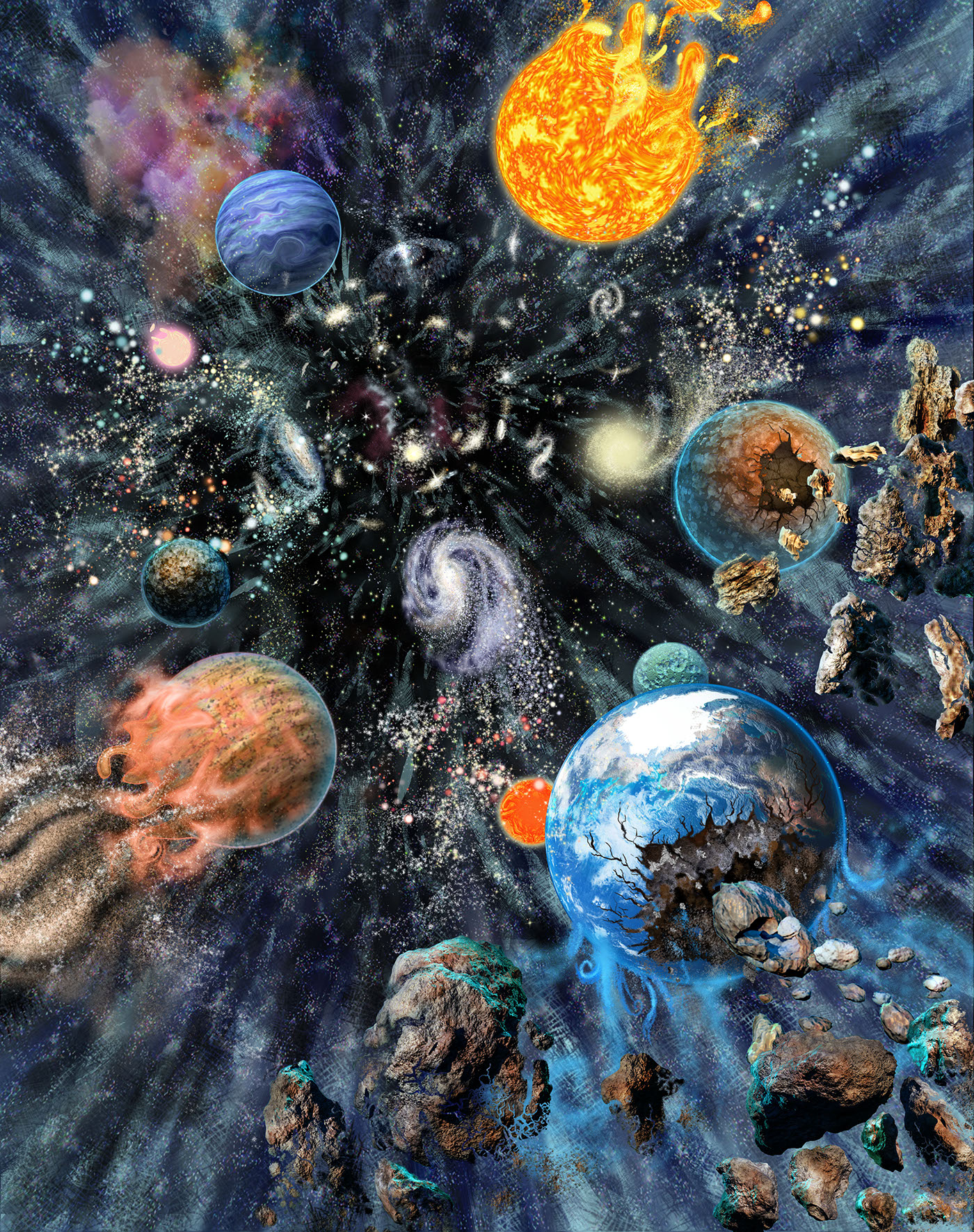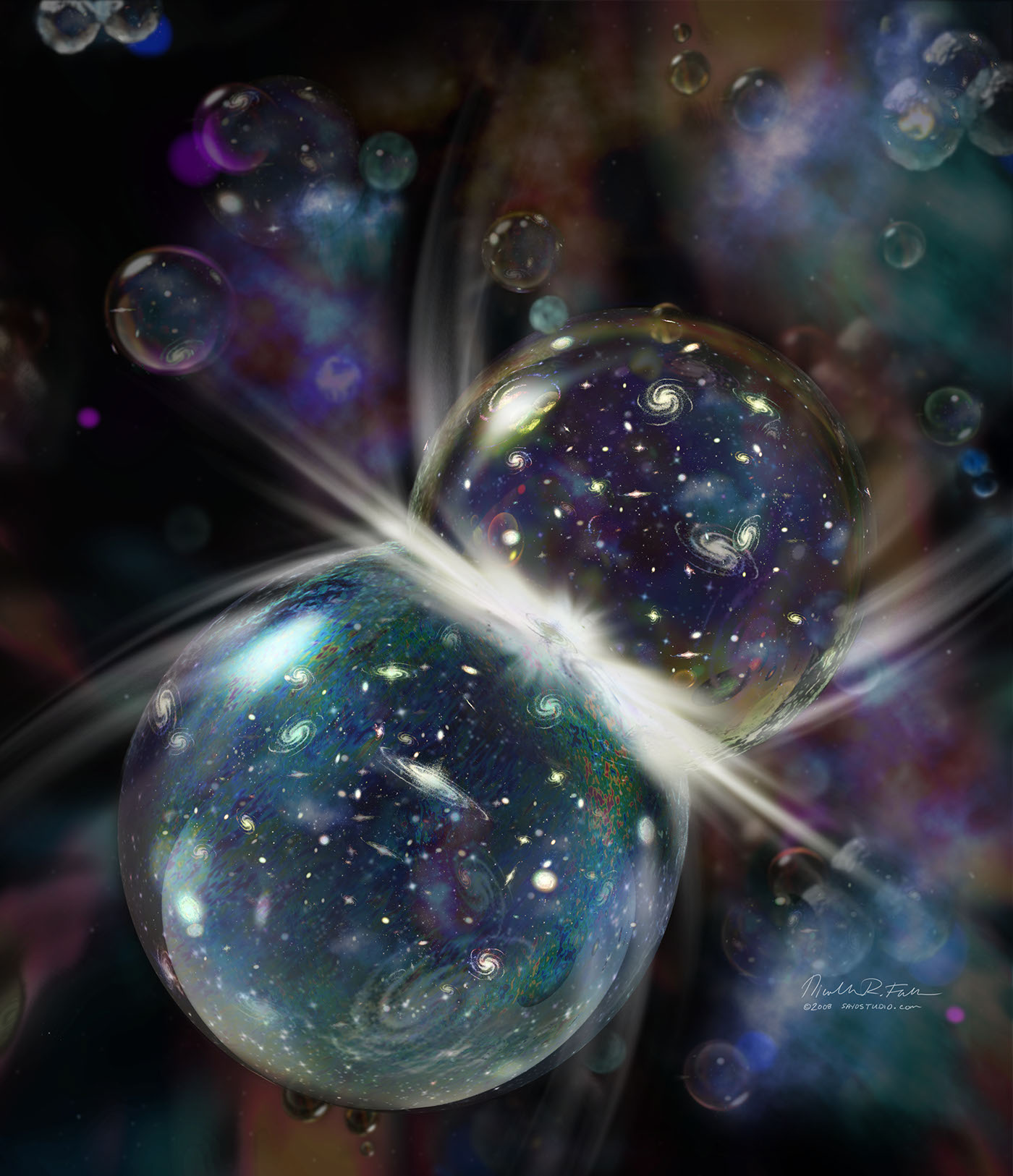
In one end-time scenario, known as the "big rip", dark energy's continual growth leads to all of the universe tearing apart, beginning with galaxy clusters, galaxies, then stars and planets (like Earth), and finally the individual atoms and particles that make up matter itself.Another example of the "big rip". Artwork digitally painted for the cover of the April 23rd, 2011 edition of Science News.

Another example of the "big rip". Artwork digitally painted for Science News.

Some scientists theorize that our universe is one of many bubble universes, with the potential to someday collide with another. Digitally painted for Science News Magazine.

Superstring theory describes particles and forces as tiny vibrating strands and loops in an attempt to unify gravity with quantum mechanics. Digitally painted for ScienceNews.

A painting depicting the dark matter that holds galaxies together. Dark matter accounts for nearly one-quarter of the universe, but scientists do not yet know what it is. Dark matter is virtually invisible to current scientific tools, and it's existence is surmised by looking at the way gravity is warped far beyond what can be attributed to visible matter. Artwork digitally painted for ScienceNews.

An illustration of the universe being created through the "Big Bounce" theory. Two sheetlike surfaces, called branes, collide and separate, which results in a massive amount of energy. The resulting minute ripples gradually form the particles of matter, eventually coalescing into galaxies. Artwork digitally painted for Science News.

A planetary disc, or early solar system, when planets are just forming from the swirly dust clouds and asteroids held tightly around the star. Digitally painted for NSF.

A three-dimensional black hole can be mapped out via a two-dimensional projection. Digitally painted for ScienceNews.


